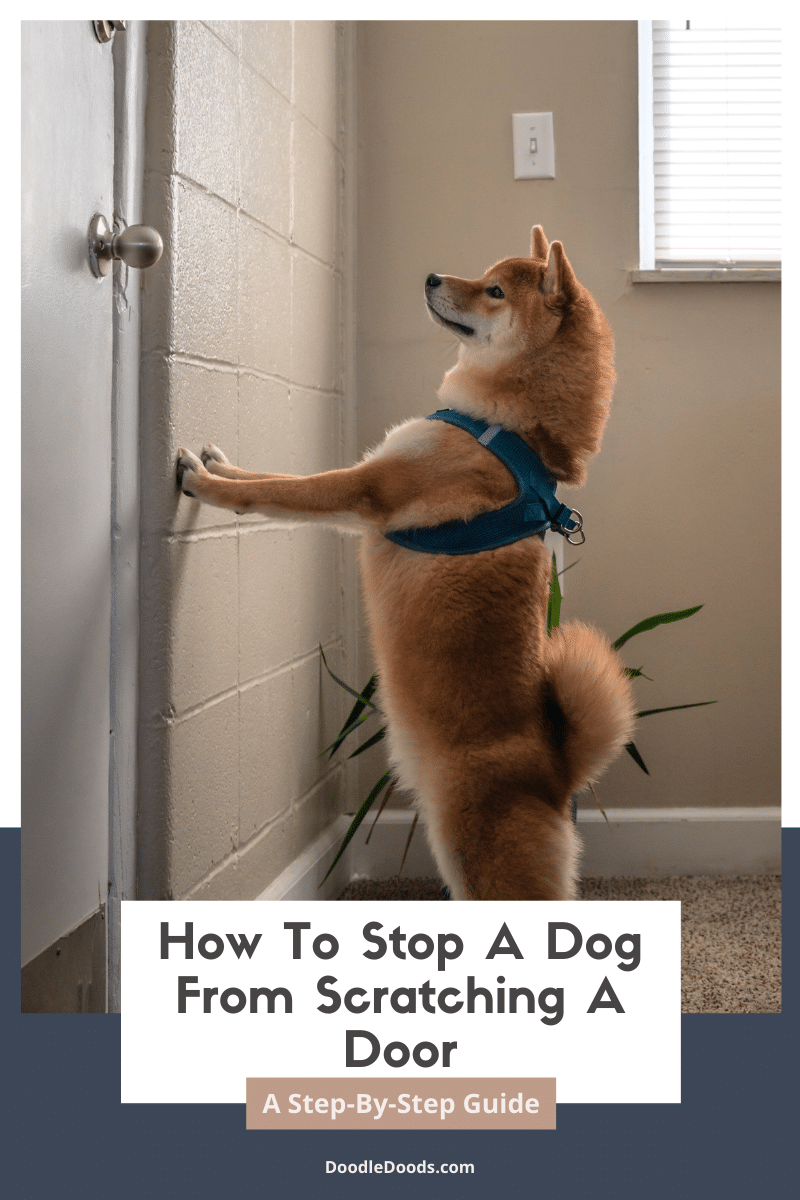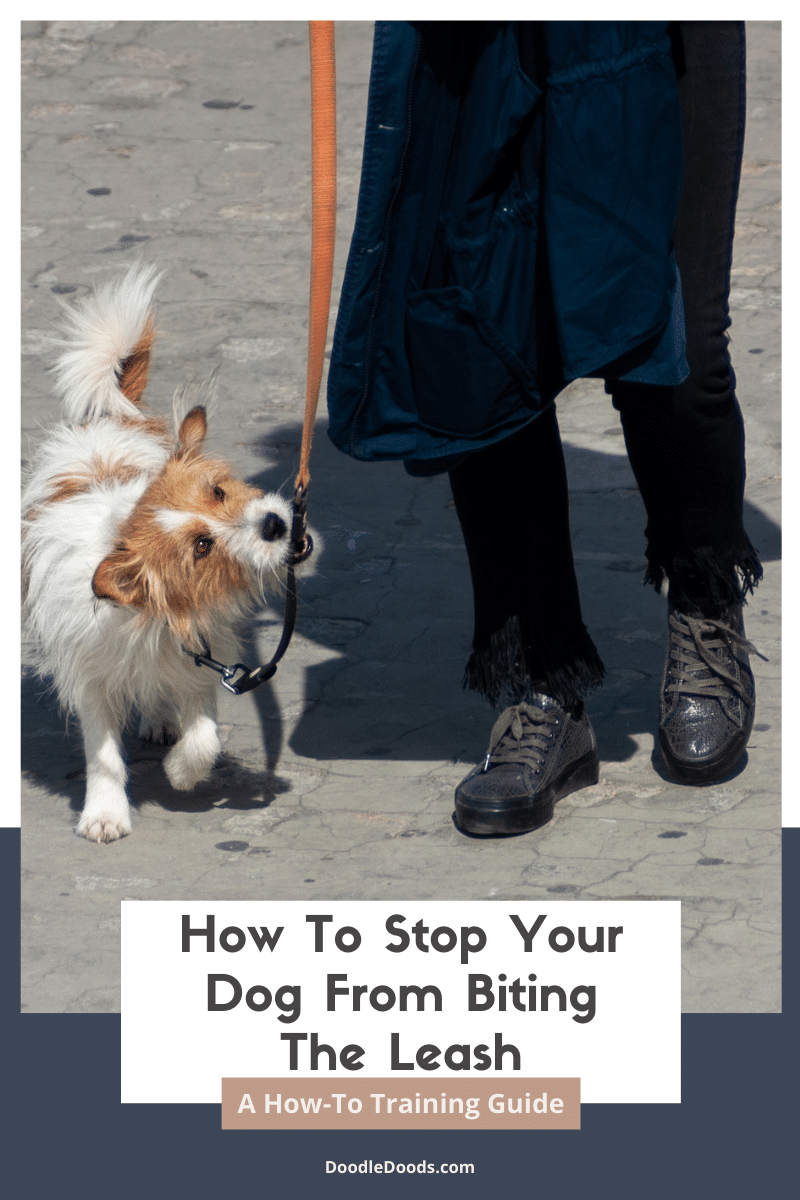Does your pooch have that innate herding instinct? Have they tried to herd you or your smaller family members? Or perhaps you’re just interested in learning more about herding breeds and herding behavior in dogs in general? In this guide, we’ll talk about herding dogs and what you can do to fix your pup from getting a bit too herd-y with other people and pets around them.
Table of Contents
- Herding Behavior In Dogs: Introduction
- What Defines A Herding Dog?
- Which Dog Breed Is Known For Herding?
- How Do I Know If My Dog Is Herding?
- How Do I Fix Herding Behavior In Dogs?
- How To Stop My Dog From Herding Me And My Family?
- Herding Behavior In Dogs: FAQs
- Herding Behavior In Dogs: Final Thoughts
Herding Behavior In Dogs: Introduction
Herding behavior in dogs is more common than you’d think. If you’ve either adopted or are planning to adopt an intelligent, active, and loyal pooch, chances are that your chosen dog may very well be in the herding dogs group. They’re known for their energetic, loving, and loyal nature, and their intelligence is often hard to match. Sounds like the perfect pet, right!
But herding dogs have been selectively bred for decades, even centuries to establish those traits that are needed for herding sheep, cattle, or ducks. In fact, even if you adopt a herding dog just as a companion and family pet, their natural herding instincts are likely to kick in from time to time. So don’t be surprised when they’re trying to herd you or especially smaller members of the family, including children and other pets. Of course, sometimes this behavior can prove to be quite a nuisance for you and your other family members.
To help you make sense of it all, we’ll now talk more in-depth about herding behavior in dogs, including what defines a herding dog, what breeds are known for herding, as well as how you can recognize your dog’s herding behavior and how to manage it successfully.
What Defines A Herding Dog?
So, what do herding dogs mean exactly? By definition, the meaning of herding dogs is that they’re either selectively bred from long lineages of herding dogs or they’ve been trained to herd livestock.
“All Herding breeds share an instinctual ability to control the movement of other animals. These breeds were developed to gather, herd and protect livestock. “ (Source)
Needless to say, for a herding dog to be successful at its main job, they’ve also got to have quite a few specific personality and temperament traits. Herding dogs are highly intelligent and easily trainable so that they understand the task in front of them. Many of the herding breeds are actually amongst the smartest breeds in the world! They’ve also got to be athletic, agile, and energetic, as the job entails a lot of movement and exercise.
Herding dogs are also extremely loyal to their owners and very obedient. They tend to form strong bonds with their favorite humans in the family. In addition to that, dogs in the herding group are usually very alert, protective, and can even be territorial.
Up until 1983, the American Kennel Club recognized herding dogs as part of the Working Group. However, not all dogs in the Working Group have the natural instinct to herd. Today, AKC recognizes 33 herding breeds in a separate Herding Group.
Which Dog Breed Is Known For Herding?
Collies, including Border Collie and Bearded Collie, are probably the most well-known herding dogs. Similarly, Australian Shepherds are, well, quite literally bred as shepherds. But interestingly enough, the sweet small-sized Corgi is also in the Herding Group (and that’s not to say herding dogs aren’t all cute and cuddly – they are!).
Here’s a full list of purebreds that AKC lists in the Herding Group:
- Australian Cattle Dog, also known as Blue or Red Heeler
- Australian Shepherd
- Bearded Collie
- Beauceron
- Belgian Laekenois
- Belgian Malinois
- Belgian Sheepdog
- Belgian Tervuren
- Bergamasco Sheepdog
- Berger Picard
- Border Collie
- Bouvier des Flandres
- Briard
- Canaan Dog
- Cardigan Welsh Corgi
- Collie
- Entlebucher Mountain Dog
- Finnish Lapphund
- German Shepherd Dog
- Icelandic Sheepdog
- Lancashire Heeler
- Miniature American Shepherd
- Mudi
- Norwegian Buhund
- Old English Sheepdog
- Pembroke Welsh Corgi
- Polish Lowland Sheepdog
- Puli
- Pumi
- Pyrenean Shepherd
- Shetland Sheepdog
- Spanish Water Dog
- Swedish Vallhund
While purebred herding dogs are most often traditionally bred and trained for herding livestock, hybrid breeds may also have the inclination to herd. To be more precise, if at least one of the parents is a herding dog, their crossbreed offspring may also inherit this trait. For instance, Aussiedoodles, Bordoodles, Corgipoos, Flandoodles, Shepadoodles, and Sheepadoodles can all exhibit their natural herding instincts.
How Do I Know If My Dog Is Herding?
So, what do herding dogs do? Before we talk about the herding behaviors in dogs, we have to take a few steps back.
Herding behavior in dogs is actually modified predatory behavior. While all dogs have the natural instinct to hunt and kill prey, that instinct has been minimized in herding dogs so that they won’t actually kill or harm the prey. The predatory sequence goes like this: searching, stalking, chasing, biting/grabbing, killing, dissecting, and consuming. However, herding dogs were bred to have the instinct to search, stalk, and chase. In some cases, also to bite.
Fun fact: different breeds have different ways of herding livestock. Or, perhaps, you and your family… This usually depends on what animals they were bred to traditionally herd, but also the environment they have traditionally been raised and worked in.
For example, Border Collies herd livestock by getting in front of the animals and using strong eye to stare down the animals and control their movement. Breeds like the Australian Cattle Dog have the tendency to stay behind the livestock and nip the heels of the animals. You can probably understand why Border Collies are often called headers and Australian Cattle Dogs heelers! Some herding dogs have been traditionally used as a living fence to guide large flocks and herds to certain areas and they’re known as tending dogs.
Some of the most common dog herding behaviors include:
- Barking: Many herding dogs are known for their loud barks to guide their livestock. If your pooch isn’t working as a herding dog, they may still have the instinct to bark loudly when their herding instinct kicks in. In addition to that, if a herding dog doesn’t get to exercise enough throughout the day, they may start to bark out of frustration.
- Chasing: It goes without saying that herding dogs love to chase animals and even humans. The instinct to chase is triggered by movement. While chasing a walking or running family member might seem innocent enough, it could become an issue when you’re out for a walk and your dog starts to chase a cycling or skateboarding stranger. Even worse, when they try to chase a car, which can ultimately be very dangerous for your pet.
- Nipping and biting: Another common herding behavior in dogs is nipping and biting, most often at the heel. Again, this behavior is often triggered when your herding dog is chasing you (or any other person or animal) and manages to catch up, often during play.
- Following or shadowing: Thanks to their insanely loyal nature, it’s very common for herding dogs to be following their owners from room to room. As they’re quite alert, they’ll probably notice that you’re about to start moving even before you actually stand up!
- Circling: Indeed, your dog circling around you when walking is quite amusing and cute to experience. But did you know that this behavior also stems from their herding instinct?! Additionally, some herding dogs circle around in a fenced backyard at the perimeter of the fence or even inside the house in a room.
- Poking: Instead of biting, some herding dogs poke with their noses when herding livestock. If you’re on the receiving end of this behavior, you may have noticed your pup trying to poke their nose at your leg or bum to control your movement.
- Walking in front or behind you: Depending on your dog’s breed, they may also like to walk in front or behind you when out and about. As we mentioned earlier, some breeds control the livestock from behind, whereas others get in front of the livestock.
How Do I Fix Herding Behavior In Dogs?
While there’s nothing wrong with herding behavior in dogs, it can prove to be a challenge for some dog owners or even become problematic if your dog doesn’t have an appropriate outlet for their herding instinct.
Granted, in the modern world herding dogs aren’t used for actual herding as much as they used to, instead finding loving homes as companions and pets only. But if you’re certain that one of the herding dogs is the right fit for you, below you’ll find some tips on how to manage your dog’s herding behavior in a healthy and appropriate way.
Start With Basic Command Training And Socializing
Obedience training and socialization are crucial to help a young pup to grow into a well-behaved and well-rounded adult. As herding dogs are highly intelligent dogs that are eager to please their owners, the process of training shouldn’t be too much of a hassle. They tend to pick up new cues and behaviors relatively easily, as long as you stay consistent and patient.
Basic commands are essential to train your dog not to herd when it’s inappropriate. Commands like “sit”, “stay”, “heel”, “leave it”, and “down” should be in every dog owner’s vocabulary and they can greatly minimize your dog’s unwanted herding behaviors in various situations. Clicker training can also be helpful in obedience training and curbing inappropriate herding.
It’s also important that you socialize your puppy with adults, children, and other pets from a young age so that they know the appropriate ways to interact with others inside and outside of their household. This will help prevent those instincts to chase and nip at moving people or pets. By the way, some dogs may resort to aggressive behaviors due to improper training and socialization during puppyhood. So be sure to do your part so that your pup can thrive!
If you need some extra guidance with training and socialization, we recommend the Online Puppy School by Baxter & Bella. This comprehensive program covers countless topics on training and behavioral concerns you may have. Plus, you can cover each lesson at your own pace, from your own home.
Engage Your Pet In Physical And Mental Exercise
As we know, herding dogs are intelligent and active breeds and will therefore need lots and lots of exercise and mental stimulation each day. Not only will this curb unwanted herding behavior in dogs, it’s also going to help prevent boredom and destructive behaviors.
Essentially, a herding dog is a working dog that needs to do jobs and tasks. And while you may not have a sheep flock for your pooch to herd, you can substitute their natural need to herd with other fun activities.
Daily exercise is essential for your dog’s physical health, but also for their mental wellbeing. Be sure to take your dog out for long walks at least twice a day, go on a run or jog with them from time to time, and also visit the dog park so that your dog can both socialize and exercise with other dogs. If you’re unsure about how much exercise your dog needs, it’s likely in the ballpark of at least 1 to 2 hours each day. Keep in mind that different breeds have different exercise requirements, so make sure to educate yourself on your pup’s unique needs.
In addition to physical exercise, a herding dog will also need plenty of mental stimulation each day. Again, this helps prevent boredom and keep your pup entertained. They’re intelligent dogs and they need a healthy outlet for their smarts! Interactive toys and puzzle games are a great way to stimulate your pup’s mind, so are puzzle feeders and treat-dispensing toys. You can also play fetch, hide-and-seek, and tug-of-war with your pup. In fact, even daily training sessions are a great form of mental stimulation.
Enroll Your Dog In Dog Sports
Various dog sports are a wonderful outlet for herding dogs. These sporting workouts will not just act as physical exercise, but also mental exercise. And as an added bonus, your pup gets to express their herding instincts just as they were originally designed to. Dog agility, Flyball, Disc Dog, and Treibball are great sporting games to try out with your dog.
Dog agility sport includes your dog running through an obstacle course that’s made up of poles, tunnels, and jumps. Needless to say, it’s an excellent physical and mental exercise for your pup to engage in. Dog agility will also require your participation, so it can create an even stronger bond between you and your best pal.
But Treibball (pronounced tribe ball), also known as Urban Herding, is specifically designed for herding dogs. It helps with impulse control and also improves your dog’s focus. In the game of Treibball, your dog will herd eight large fitness balls into a goal within a seven-minute timeframe. Your dog doesn’t have to be leashed for this game and you can easily play it at home or in your fenced backyard. Under the guidance of your hand signals and verbal cues, your dog will learn where and when to move the balls.
Moreover, you can also find some jobs for your dog to do around the house and in the yard. You can teach your dog to, let’s say, bring in the newspaper or put away their toys. It will take a bit of trial and error, but your herding pooch will surely get the hang of it quite soon.
Don’t Encourage Unwanted Behaviors
For herding dogs, those herding instincts come naturally. That’s what they were originally bred and trained for! However, this doesn’t mean that you should let inappropriate behaviors slip. Most importantly, you shouldn’t encourage or reward unwanted herding behaviors in your dog in any way. On the other hand, you should never scold or punish your pup for behaving in a less-than-ideal way, either, as it can have the exact opposite effects you’re trying to achieve.
So, stay consistent and patient with your pup, start training and socializing them as soon as possible, and find appropriate outlets for their herding behaviors. And if you need help, don’t hesitate to reach out to professionals in the field.
How To Stop My Dog From Herding Me And My Family?
Daily exercise, obedience training, and fun sports and games are all excellent for managing herding behavior in dogs. But if your pooch has already gotten into the habit of herding you and your family, then it might require some additional work.
The first thing you want to do is to find out what triggers your dog’s herding behavior. Does it happen when you walk away or pass them? Or do they start herding when your kids are cycling in the backyard? Perhaps it’s triggered by your cat running around the house?
Then you should pay close attention to your dog’s body language and behavioral cues so that you can stop the behavior even before it occurs. Some dogs crouch down and start staring at the target in a specific way, others start barking or sniffing the heels. As soon as you’ve noticed those cues, try to intervene immediately to redirect your dog’s attention. You can use toys for distracting your dog, but not treats, as you don’t want to reward this behavior.
Once you know the triggers and behavioral cues, you can implement the intervention tactic every time you notice that your dog is about to start herding you or your family. As we mentioned before, you should never reward this behavior, not even just once, as it’ll only enforce the inappropriate herding habits. Instead you should stay consistent and over time your dog will learn how to behave around you and other members of the household. If necessary, consult with a professional dog trainer who can surely help you out with this issue.
We also recommend you read our in-depth guide Desensitization And Counter-Conditioning: Correcting Behavioral Issues In Dogs that has many helpful insights on how to tackle unwanted and undesirable herding behaviors in dogs.
Herding Behavior In Dogs: FAQs
Border Collies are not just the most well-known, but also regarded as the best herding dogs. After all, the Border Collie is said to be the world’s smartest dog breed with the Poodle right behind it! But to be fair, all herding dogs are amazing with their unique traits. All herding dogs possess similar qualities, such as extremely high levels of intelligence, innate loyalty, and obedience. They’re also very energetic and athletic dogs, making them excellent companions for more active people that enjoy spending time outdoors with their four-legged best friends.
While herding dogs aren’t actually aggressive, they have been originally bred to use some level of aggression to control livestock. For instance, some herding dogs have the tendency to bark, whereas others are trained to nip and bite the animals. Because of that, it’s not uncommon for herding dogs to behave like this towards other animals, pets, and children if they get the urge to herd. This instinct is most commonly triggered by movement, such as their “prey” or “herd” walking, running, or even cycling by. Fortunately, those herding behaviors can be managed and fixed with the right approach and training techniques.
Herding dogs are often called velcro dogs because they’re so highly loyal to their owners and cannot seem to spend time away from their favorite humans. They’ve been traditionally bred to be obedient and follow the orders of their owners. Therefore, if your herding dog is constantly following you, they’re probably eagerly waiting for the next task you have for them.
Herding Behavior In Dogs: Final Thoughts
Herding behavior comes naturally to dogs that have been originally bred and trained to be herders. In some cases, the herding instinct is simply funny to look at, but in other cases, it could become downright dangerous for your pet or anyone else they try to herd. At the end of the day, herding dogs are extremely intelligent and fun-loving companions that will easily learn appropriate behaviors if you put in the work. Hopefully the tips in this guide have managed to shed some light onto this behavior so that your pup can express their natural instinct to herd in a healthy and safe manner.
Learn How to Care for Your Doodle Puppy!

Perfect for first-time Doodle parents, get ALL your questions answered, including questions new Doodle parents don’t even think to ask.
Plus, get $700 worth of Bonus Materials for FREE, including:- Doodle Parenthood Community and Support Group ($190 value)
- Doodle Puppy Growth Tracker ($20 value)
- EMERGENCY Cheatsheet: When To Call The Vet Immediately ($50 value)
- HELP! Button ($145 value)
- And SO MUCH MORE!









